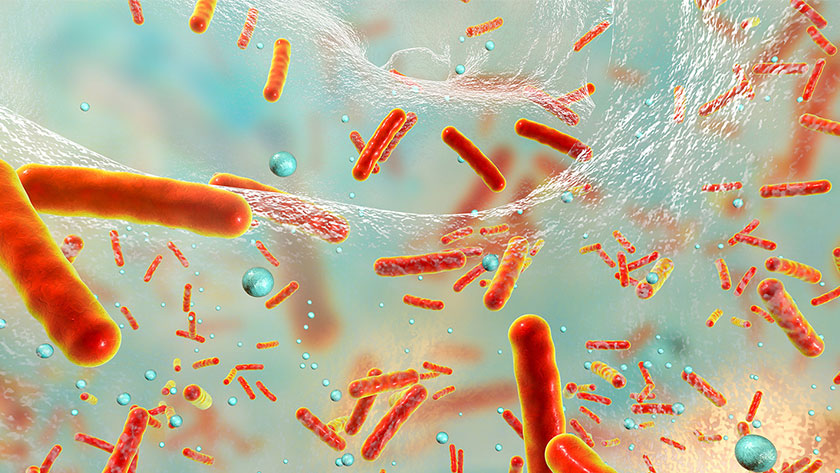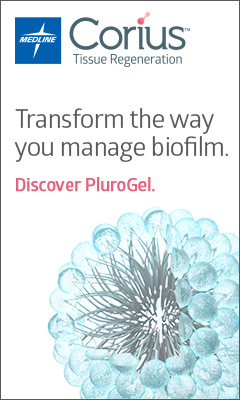Beating biofilm with surfactant-based wound dressings
The results of a promising ex vivo study show a reduction in bacterial biofilms

Bacterial biofilms can be found in most chronic wounds.1 A recent ex vivo study investigated if surfactants can facilitate in removing bacterial biofilms, or if they might sensitize the biofilms to antimicrobial interventions.
The initial surfactant-based gel test:
- Researchers tested a new surfactant-based wound gel on an ex vivo porcine skin explant model infected with a functionally tolerant 3-day biofilm.
- The simulated wounds were dressed either with a surfactant-based gel directly on the wound or moistened gauze.
- The wounded explants were then wiped daily with moistened gauze. The gel or gauze was then reapplied.
- Each day, an explant from each group was harvested and tested for total viable bacteria counts and viable biofilm-protected bacteria counts.
The results:
- Daily wiping with saline-moistened gauze led to an initial decrease of bacteria. By day 3, the biofilm had been fully reestablished to the same level prior to the beginning of treatment.
- For the surfactant-based treatment, there was no detectable functional biofilm after the first treatment.
- The total bacteria in the surfactant-treated explants steadily decreased through day 3, when there were no detectable bacteria.
- The wiping-only control bacteria counts remained steady.
Positive outcome
“The use of a moist gauze to wipe the visually apparent slime off of a wound appears to be insufficient to reduce biofilm over a three-day period,” the researchers stated in the study. “A three-day regimen of dressing the wound model with a surfactant gel followed by gentle removal of the gel by wiping with a moistened gauze appears to be a simple and adequate approach to removing a bacterial biofilm infection in an ex vivo model.”
The researchers noted that additional clinical evidence is needed to determine if this promising approach can perform the same in clinically infected chronic wounds.
Key takeaways
This research is vital, as it shows that wound care science and technologies are advancing enough to tackle even the most persistent of wounds. Learning from this research informs the way we create products that will ultimately help to produce better outcomes when it comes to wound care and skin health.
The total bacteria in the surfactant-treated explants steadily decreased through day 3, when there were no detectable bacteria. The wiping-only control bacteria counts remained steady.
“The use of a moist gauze to wipe the visually apparent slime off of a wound appears to be insufficient to reduce biofilm over a 3-day period,” the researchers stated in the study. “A 3-day regimen of dressing the wound model with a surfactant gel followed by gentle removal of the gel by wiping with a moistened gauze appears to be a simple and adequate approach to removing a bacterial biofilm infection in an ex vivo model.”
The researchers noted that additional clinical evidence is needed to determine if this promising approach can perform the same in clinically infected chronic wounds.
References:
- Yang Q, Larose C, Porta AD, Della Porta AC, Schultz GS, Gibson DJ. A surfactant-based wound dressing can reduce bacterial biofilms in a porcine skin explant model. Int Wound J 2016; doi: 10.1111/iwj.12619


